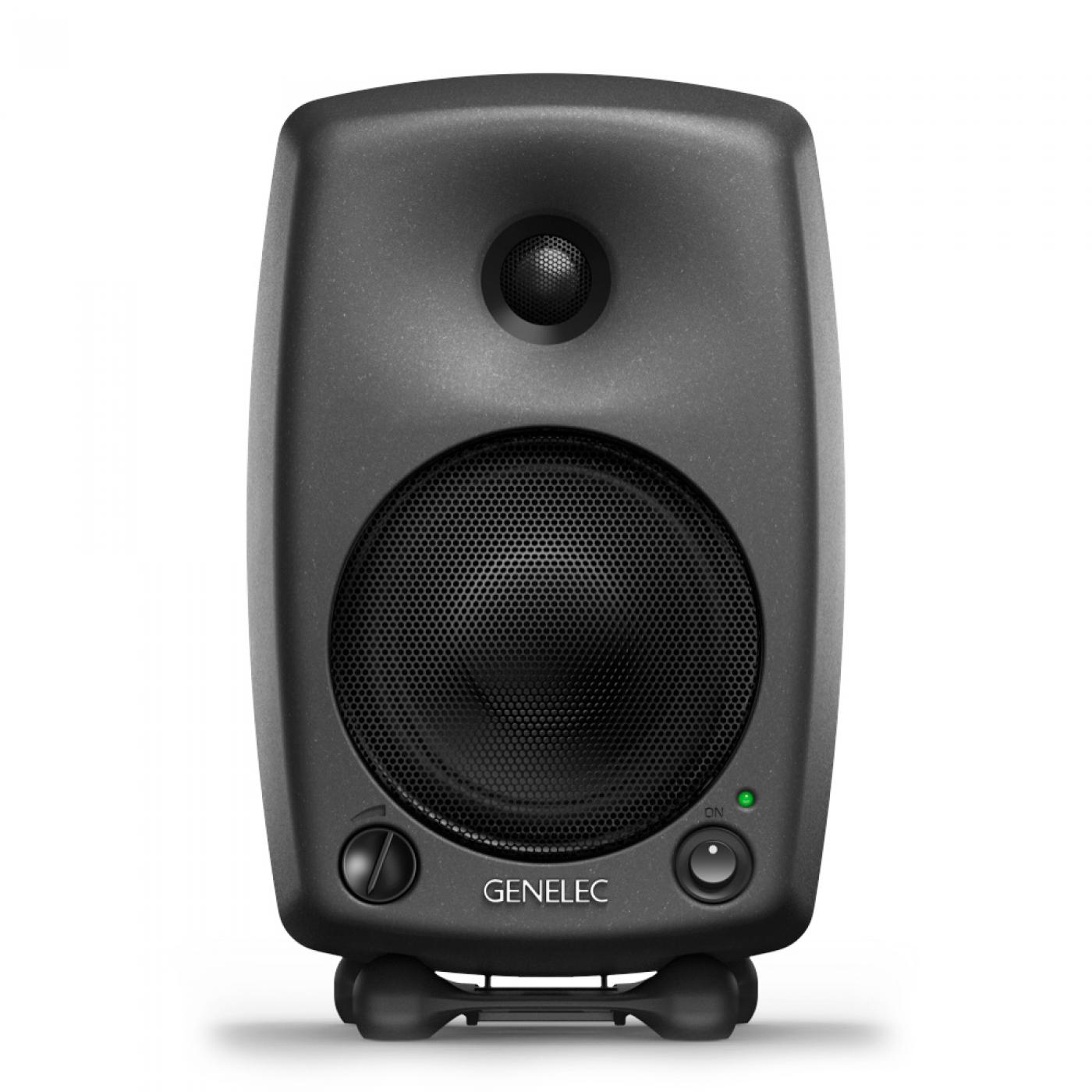Immersive Talk with 8082 Audio Studio
Can you tell our readers a little more about yourselves?
Jackie Li: I'm the audio director of 8082. I began my career as a music arranger before transitioning to sound design and, after working alone for a long time, I started to notice the challenges of creating larger projects that way. So, I decided to put together a strong team, and that's how 8082 was established. Now I have over fifty highly talented colleagues.
Sean Xu: I'm the assistant manager. My duties include supervising the music production team and managing the recording and mixing teams. When we started, I was deeply into the art of music arrangement and composition, which complemented well the skills of my partners. This made us confident in our ability to cover all aspects of sound content, from music and sound effects to voice acting.
Chocolate Zhu: I'm the voice-over director and audio designer. My role involves casting and personnel management for our projects. I studied Audio Production at the Beijing Contemporary Music Academy from 2010, and I have since worked on a multitude of projects, often utilising the viewpoint of a sound designer, which allows me to gain a richer comprehension of voice acting performances and stylistic nuances.

L to R: Chocolate Zu, Jackie Li, Sean Xu.
Can you tell us a little more about your studio space?
8082 AUDIO STUDIO was established in 2013. We're situated in Beijing's Chaoyang District, and we occupy 1500 square metres of space. We have seven recording studios, three mixing studios and fourteen production rooms as well as meeting rooms, audio experience rooms, and several offices – which utilise more than one hundred Genelec loudspeakers. There's one large studio of 80 square metres equipped with Dolby Atmos 9.1.6 and two smaller studios of 35 square metres equipped with Dolby Atmos 7.1.4, allowing us to meet diverse mixing needs. In these three Dolby Atmos mixing studios every monitor in each room is identical, which we feel allows us to achieve the most uniform and pristine listening experience possible.
We arrange spaces for systematic, streamlined workflows – with each having a distinct purpose. For example, our recording rooms focus solely on audio capture and mix rooms serve only for mixing. As a trio, our philosophy is to use our own unique strengths to help get the studio's wealth of projects delivered to the highest standard, including sound design and music creation, voice-over productions for games, animations, films, radio dramas, audiobooks, and sound design for in-vehicle intelligent systems.
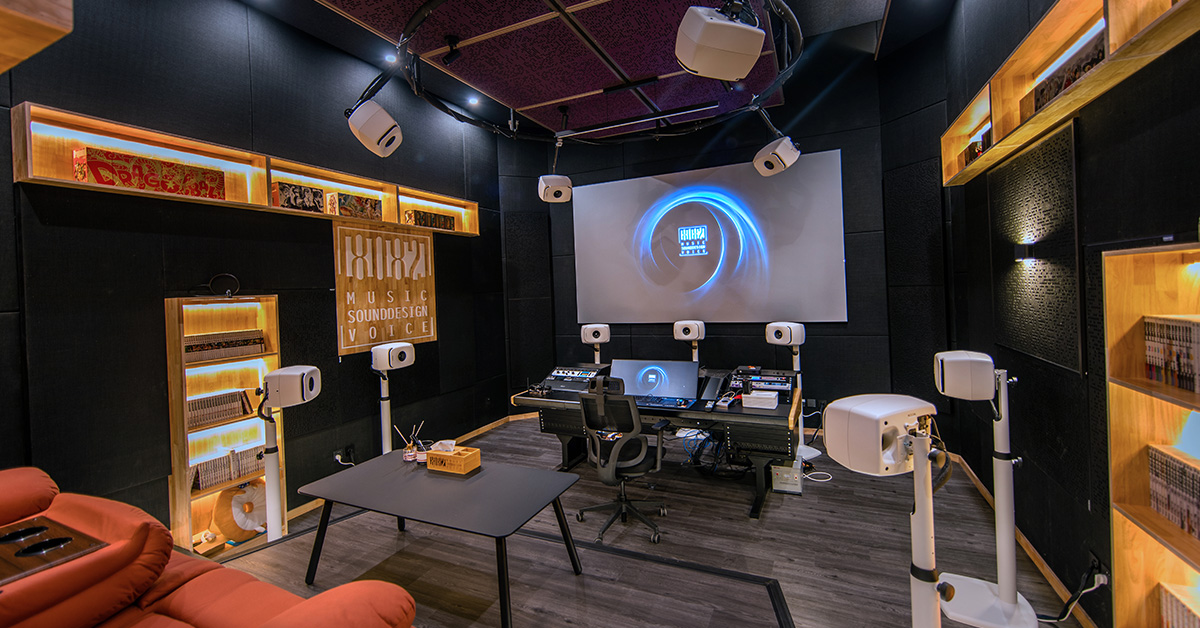
8082's Studio Y: 7.1.4 system with 11 x 8341A and 2 x 7370A.
What type of work do you do in your studio?
Jackie Li:
Previously, my main role involved overseeing the overall style, quality, and progress of various audio projects, however, as our team has expanded, I've increasingly focused on team management. Transitioning from hands-on creative work to managing people was quite challenging, leading me to question my professional identity at times. But over time, I've come to understand that effective management forms the bedrock for producing exceptional work.
Sean Xu:
We create music, sound effects, record voice-overs, and mix audio for various industries in need of audio content, such as gaming and film. Our typical workflow consists of four main categories: music composition, sound design, voice-over acting, and mixing – allowing us to tailor audio content to our clients' specific needs.
Chocolate Zhu:
I am dedicated to discovering and nurturing top talent for projects in gaming, film, and television, providing premier casting and talent management services. I also ensure the engagement of seasoned voice directors whose styles align with the project’s requirements, which enables them to deliver voice performances that perfectly resonate with their respective characters.
What got you interested in immersive audio?
Jackie Li:
For a long time, working on games within the confines of stereo formats meant many ideas couldn't be fully realised. Immersive audio should be a fundamental requirement for games, as they strive to create a virtual universe, one where players can fully immerse themselves. With immersive audio formats, there's a much larger design space available; it provides a sense of freedom to break away from the limitations of stereo and explore creative possibilities more expansively.
Sean Xu:
It was the awe-inspiring experience of immersive audio while watching movies and playing games. As a company specialising in audio content production, I felt it was imperative for us to possess the capability to create that kind of immersive audio content.
Chocolate Zhu:
For me, it all began in 2017-18, when I first experienced Dolby Atmos movies in theatres. The sensation of sound coming from all directions gave me chills and significantly enhanced the viewing experience. Subsequently, I experienced immersive audio in gaming, in 'Red Dead Redemption' for example, which further intensified my interest in immersive.
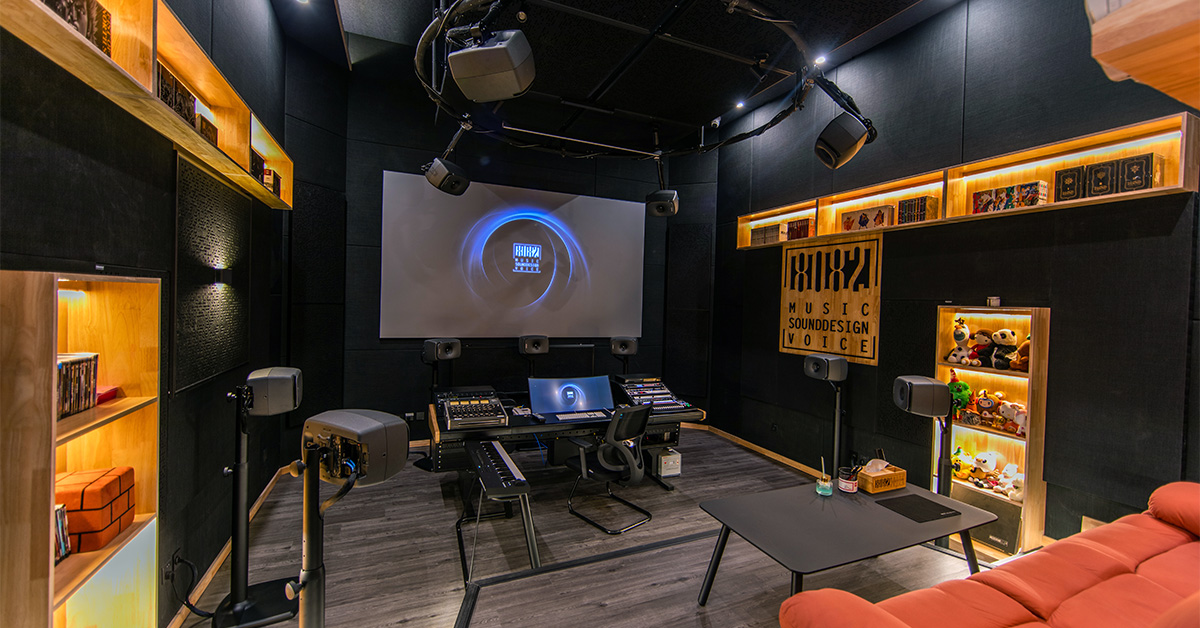
8082's Studio X: 7.1.4 system with 11 x 8341A and 2 x 7370A.
What made you finally decide to equip your studio for immersive?
Jackie Li:
I felt that if 8082 AUDIO could be a pioneer in acquiring immersive audio production capabilities and meeting new demand, it would be beneficial for our development. Therefore, the decision to upgrade our equipment to support this was made without much hesitation.
Sean Xu:
Immersive audio has become widely applied within the film industry, but it remains less prevalent in the realm of game audio. Since most of our clients are game companies, we've aimed to be among the earliest providers to offer immersive audio production services.
Chocolate Zhu:
It was also driven by passion. We had a strong desire to have a studio in which we could completely immerse ourselves in and experience our favourite gaming and film works with the best sound quality. At the time, the possibility of related work and the investment involved was a secondary issue, as we were really enjoying satisfying our own needs as enthusiasts.
How do you feel working in immersive differs to stereo?
Jackie Li:
Immersive not only enables the creation of a more realistic sonic world through spatial shaping but also expands the canvas for the imagination, permitting a wider range of design possibilities using the spatial dimension.
From a mixing perspective, stereo sound compresses all sound elements into two channels for playback, leading to more interaction between sound elements. In immersive, the same amount of sound information is dispersed across multiple channels, reducing interference. The need for "avoidance" or "compromise" is drastically diminished. This revolutionary difference allows me to focus more on the expressive potential of sound itself.
Chocolate Zhu:
Immersive audio greatly enhances dynamic range and channel allocation, prompting us to consider scene depth, character positioning, and movement comprehensively during recording. There will be more demands for detailed expressions.
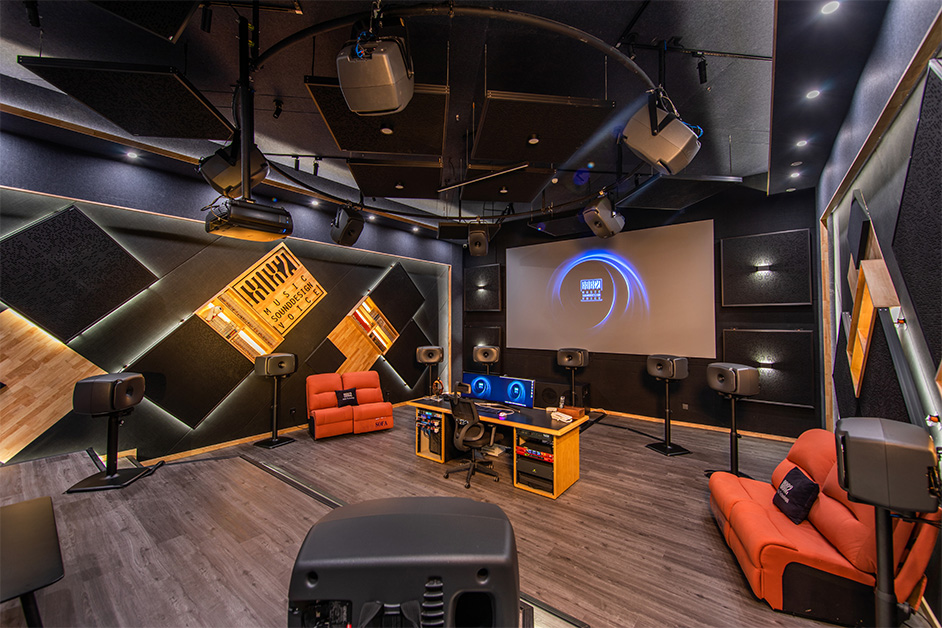
8082's Studio Z: 9.1.6 system with 15 x 8361A and 1 x 7382A.
Can you describe your Genelec system and why you chose it?
Sean Xu:
We use the 8341 for the 7.1.4 production studios (Studio X and Studio Y) and the 8361 for the 9.1.6 production studio (Studio Z) as monitoring loudspeakers. Before choosing them, we experimented with various brands of monitoring speakers to enhance our experience and satisfy our curiosity. We soon realised the importance of consistency in sound. Our pursuit evolved from experiencing different personalised sounds to achieving a standard that ensures consistency.
That experience brought us to Genelec Smart Active Monitoring (SAM) and its GLM calibration capability that can store calibration data directly within the monitors. This feature has been tremendously helpful during our work processes. It enables us to conveniently hear consistent sound across different environments, helping us in judging the accuracy of the sound without the need for additional hardware or software.
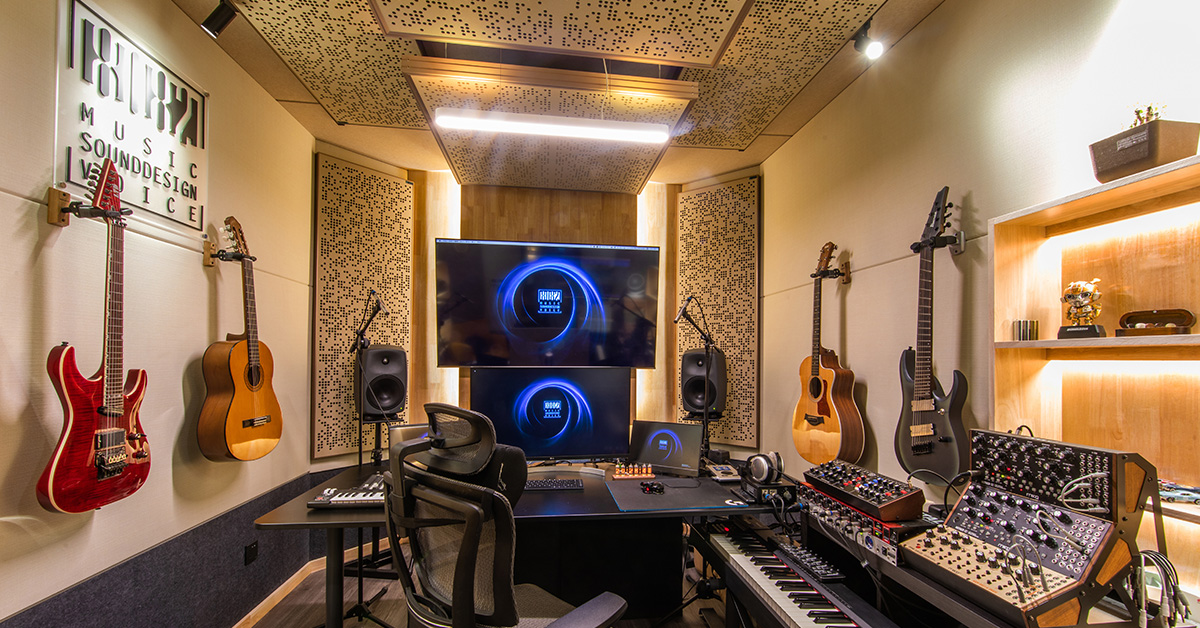
Can you share more about your experience with our Genelec Loudspeaker Manager (GLM) calibration software?
Sean Xu:
GLM has been immensely beneficial to us. It allows us to accurately judge the sound without relying on other hardware or software for calibration. We don't have to worry about forgetting to bypass the software calibration plugin and exporting incorrect files. We also don't need to invest heavily in hardware calibration equipment. Moreover, GLM calibrates quickly and is very convenient to use.
More recently, you added our 8381A SAM™ Adaptive Point Source Main Monitors to your setup. How have they been?
Jackie Li:
The 8381 not only delivers incredibly accurate sound but incorporates cutting-edge monitoring technology. Continuously pursuing the latest technology is one of our core objectives for development at 8082 AUDIO. I've found the detailed listening experience afforded by the 8381's five-way crossover response truly exciting!
Sean Xu:
The 8381 is solid and steady, and exceptionally meticulous. It gives both a powerful impact at high volumes and a graceful storytelling-like quality.
What kind of immersive projects have you worked on recently and has the investment in immersive paid off?
Jackie Li:
The number of projects involving immersive audio is increasing for us. Recently, we've had games like 'Black Myth: Wu Kong' and the mobile game 'Naruto', a series of projects for electric vehicles from Li Auto, fake window effects for the XGIMI Projectors, and of course songs.
Investing in immersive audio technology has been a great decision for us. Not only has it diversified our services, but also enhanced our influence. Mastery of immersive audio production also builds up the audio creator's sonic outlook, boosting sensitivity and creativity. I feel that depth of creativity is the core strength of content creators, and it's difficult to attain such immense insight within the constraints of stereo.
Chocolate Zhu:
Immersive Audio gives us creators more design space and expressive techniques, allowing us to create unprecedented auditory experiences. It's exciting! Whether driven by our curiosity or the professional pursuit of new technologies, I feel we should always engage in exploration and learning. Then, when we apply new capabilities to projects, we also help to lift the entire industry.
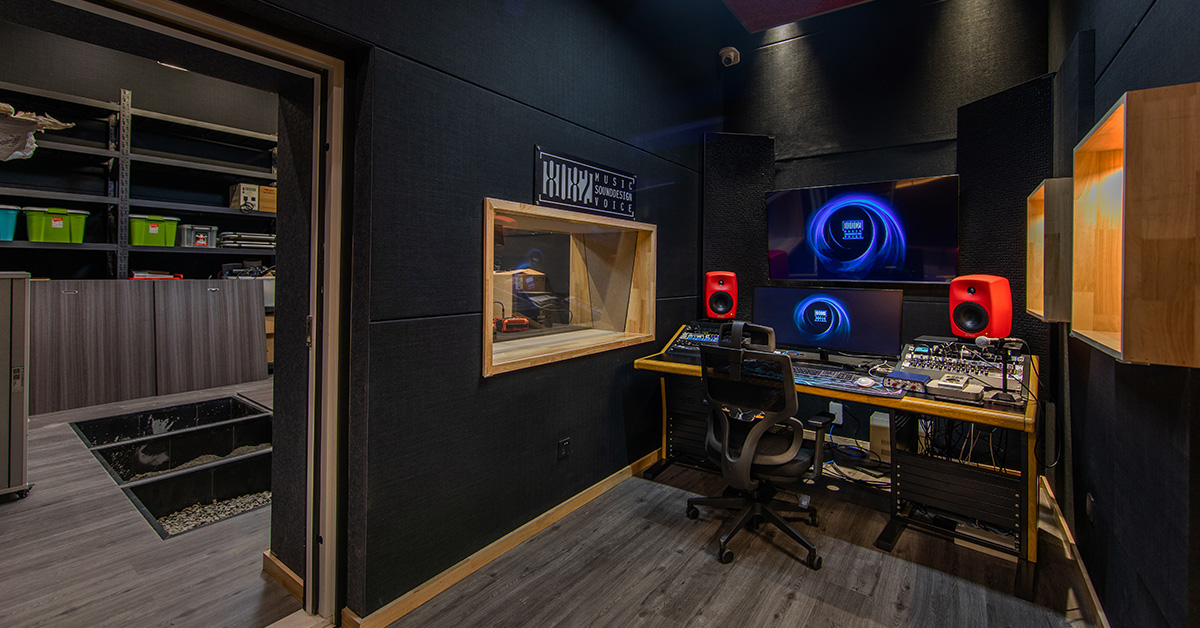
How do you see the future of immersive audio over the next few years?
Jackie Li:
In recent years, the development of VR devices has revealed expanding possibilities for immersive audio in the future. I believe that creating worlds like in the movie 'Ready Player One' is achievable. With video presenting a lifelike world before our eyes, sound that lacks three-dimensional presence will instantly break and disrupt the immersive experience. So, as humanity constructs virtual worlds, immersive audio will become a necessity.
Chocolate Zhu:
With the proliferation of hardware devices and improvements in software algorithms, I believe that immersive audio technology will become more widespread and user-friendly. In the future, everyone will likely enjoy many more immersive audio experiences.








